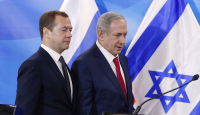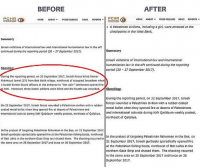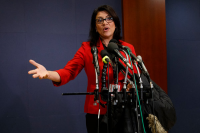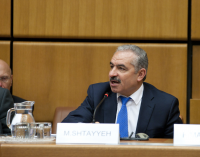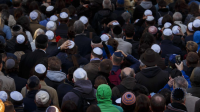
Links
Sheba Medical Centre
Melanie Phillips
Shariah Finance Watch
Australian Islamist Monitor - MultiFaith
West Australian Friends of Israel
Why Israel is at war
Lozowick Blog
NeoZionoid The NeoZionoiZeoN blog
Blank pages of the age
Silent Runnings
Jewish Issues watchdog
Discover more about Israel advocacy
Zionists the creation of Israel
Dissecting the Left
Paula says
Perspectives on Israel - Zionists
Zionism & Israel Information Center
Zionism educational seminars
Christian dhimmitude
Forum on Mideast
Israel Blog - documents terror war against Israelis
Zionism on the web
RECOMMENDED: newsback News discussion community
RSS Feed software from CarP
International law, Arab-Israeli conflict
Think-Israel
The Big Lies
Shmloozing with terrorists
IDF ON YOUTUBE
Israel's contributions to the world
MEMRI
Mark Durie Blog
The latest good news from Israel...new inventions, cures, advances.
support defenders of Israel
The Gaza War 2014
The 2014 Gaza Conflict Factual and Legal Aspects
To get maximum benefit from the ICJS website Register now. Select the topics which interest you.
The battle over BDS – trends, lessons, and future trajectories
Executive Summary
- For the first 10 to 15 years after the crystallization of the modern BDS movement at the turn of the 21st century, the global BDS campaign enjoyed a comfortable operating environment. While the counter-BDS community’s response to specific challenges was, at times, successful, it largely failed to disrupt the BDS momentum. During this period, and especially following the Goldstone Report and the Mavi Marmara flotilla incident in 2009- 2010, the counter-BDS community developed its capacities, built its network, and learned by trial and error.
- This capacity-building process is coming to fruition. On the one hand, the BDS movement continues to be highly-active, even managing to make headway in certain areas. Yet, it is becoming increasingly clear that the counter-BDS network is succeeding in disrupting BDS momentum and forcing the BDS movement out of its comfort zone.
- Increasingly, the BDS movement finds itself on the defensive. It faces exposure of its terror-links, credible accusations of anti-Semitism, and national and municipal legislation and resolutions that attack its legitimacy. The BDS campaign is finding it increasingly difficult to achieve major victories, and even those it achieves are often reversed.
- Nevertheless, it would be a grave mistake to assume that the battle over BDS is over. The BDS movement has shown itself to be highly adept at pivoting to new strategies, building influential alliances, and identifying emerging There continue to be numerous arenas in which it faces little effective resistance.
- Furthermore, the international environment in which BDS operates has the potential to shift dramatically within a relatively short period toward the creation of more favorable conditions for BDS.
- Therefore, the counter-BDS campaign must continue to develop the capacities and synergies necessary to meet new and evolving BDS strategies. At the same time, it must increase its efforts to put BDS on the defensive and to distance it from mainstream audiences, including those critical of Israel.
- The following study begins with an analysis of the evolving strategies of both the BDS and counter-BDS networks, as well as of the external factors that may affect the trajectory of the BDS campaign. It then examines two of the primary processes that have put BDS on the defensive: the exposure of the links between BDS and anti-Semitism, and between BDS and terrorism. It concludes by examining the implications of this analysis for the counter-BDS community.
- Among the key trends in the international BDS campaign is the increasing importance of the political and governmental arenas. This is true both on the national, subnational (municipal and local), and supranational (EU and UN) levels.
- The growing significance of the political and governmental arenas in the BDS campaign has numerous implications both for the nature of BDS activity and for the types of capacities, resources, and strategies needed by the counter-BDS community to meet the challenges in these arenas.
- Municipal and local BDS campaigns, which have already grown in Europe over the last several years, are now evolving in North and South America. Both leading BDS and counter-BDS groups have identified the municipal sphere as a critical arena in the next stage of the BDS campaign.
- This reality means that an effective response must include the expanded sharing of knowledge and best practices, particularly between European and North American actors, improved cooperation among the wide range of groups with local relationships, and enhanced information-gathering regarding potential upcoming challenges on the local level.
- On the national level, the greatest determining factor as to whether BDS will intensify or recede in a particular country will be the political fortunes and power-sharing arrangements between various political actors (for example, the hard-left wings of the U.S. Democratic Party and the UK Labour Party, Podemos in Spain, and the radical branches of the ANC in South Africa).
- In the U.S. arena, while headlines related to BDS have often been dominated by battles over Congressional counter-BDS bills and President Trump’s Executive Order concerning Title VI of the Civil Rights Act, two key elements are often overlooked. The first is the several pieces of counter-BDS legislation already signed into law by then-President Obama, which contain substantive clauses that could potentially be leveraged.
- The second is that despite the noisy debates over resolutions explicitly focused on BDS and over the pro-BDS first-term Members of Congress, a more significant challenge is the quiet political lobbying work being done by U.S. and Palestinian BDS groups, together with experienced representatives such as Betty McCollum (D-Minn.). Several key American BDS groups are placing an increasing emphasis on political lobbying and advocacy, and are improving their capabilities and effectiveness. Some of these groups are linked to designated terrorist organizations.
- South Africa has become a prime example of how the latent tendencies of BDS – violence, threats, anti-Semitism, and support for terror – increasingly find expression when it enjoys a supportive political environment.
- The EU arena may “heat up” once again and become a central catalyst for BDS after several years of relative quiet. This will be the case if the new EU High Representative for Foreign Affairs and Security Policy, Josep Borrell, seeks to implement an aggressive version of the strategy of “differentiation” and continues or increases EU funding to BDS- promoting groups.
- The UN Human Rights Council blacklist is being used by the BDS campaign to promote economic boycotts in a wide variety of arenas. A closer examination of the list however reveals that it actually reflects a rejection of many of the BDS movement’s main claims. Despite the UNHRC’s anti-Israel bias, and the extremely broad mandate given to the OHCHR, many of the BDS movement’s primary targets were not included on the blacklist. This would seem to imply that these targeted companies should not be included on the blacklists of any other public or economic body.
- The counter-BDS community must work to mitigate the effects of the list, including through the expansion of existing U.S. legislation prohibiting participation in boycotts established by governments. Given that the blacklist includes U.S. companies employing tens of thousands of Americans, and given that the BDS movement is trying to have additional companies added to the list, the U.S. should make clear that continued UN work on the list will lead to immediate consequences in terms of U.S. funding and cooperation.
- Steps by International Criminal Court (ICC) Prosecutor Fatou Bensouda to advance an investigation against Israel will be used by the lawfare organizations that make up a key element of the BDS movement to promote legal claims in favor of BDS (although the lawfare implications of an ICC investigation go far beyond BDS). These organizations’ choices regarding priority targets may be impacted by the Prosecutor’s decisions as to which alleged Israeli actions to focus on most extensively (i.e., its military actions in Gaza, its activities in the West Bank).
- The BDS movement must generate a constant stream of “victories” for both internal and external consumption. As a result, it has adopted a pragmatic strategy of focusing on “low-hanging fruit,” particularly in the economic arena.
- Therefore, a key predictor as to which companies will be targeted and prioritized is whether there is already a non-related (i.e., non-Israel focused) divestment campaign underway, onto which the BDS movement can piggy-back (a prime example are companies targeted for divestment due to their involvement in the production of cluster munitions.)
- Another critical predictor is whether a company has already shown itself to be susceptible to BDS pressure by partially conceding to BDS demands or attempting to engage BDS activists in dialogue (or is in a sector in which another company has already shown itself vulnerable to such pressure.)
- Experience indicates that corporate attempts to appease or engage the BDS movement generally lead only to an intensification of the BDS campaign, while a policy of ignoring BDS tends to lead the BDS movement to prioritize “softer” targets.
- To meet the demand for a constant flow of “successes,” the BDS movement is willing to manufacture and advertise artificial victories.
- In some cases, where it appears that it will be difficult to convince consumers to actually boycott a targeted company, the BDS movement lowers the bar by advocating “BDS virtue signaling” rather than actual boycotting.
- Despite its opposition in principle to “settlement boycotts,” the BDS movement tends to focus on such boycotts because of their ability to attract broader audiences. At the same time, the BDS movement seeks to expand and blur the boundaries of what is considered “settlement-related activities,” in order to advance campaigns couched in the language of settlement boycotts but aimed at undermining Israel’s economy as a whole. The campaign against Israeli banks is a prime example of this strategy.
- When BDS lobbying and advocacy efforts fail to produce results, BDS organizations will often employ bullying and threats or more indirect methods such as proposing the adoption of general investment screens.
- While public debates over BDS anti-Semitism continue, two points should be clear. The first is that hallmarks of the BDS movement’s ideology and rhetoric meet the most- widely accepted international definition of anti-Semitism– the International Holocaust Remembrance Alliance (IHRA) Working There is no doubt that BDS denies the Jewish people’s right to self-determination in any borders, characterizes Israel as an inherently racist, “apartheid” endeavor, applies double standards to Israel, and compares Israeli policy to that of the Nazis.
- The second point that should be clear is that prominent BDS figures and organizations in numerous countries have repeatedly crossed the line to blatant anti-Semitism, and that anti-Zionist activity has repeatedly degenerated into threats and violence against Jews. Examples abound.
- More and more parliaments and political leaders have recognized the anti-Semitic nature of the BDS movement. Most prominent among these are the resolutions of the German Bundestag (May 2019) and the Austrian Parliament (February 2020). For example, the Bundestag’s resolution condemning BDS declared that, “the argumentation patterns and methods used by the BDS movement are anti-Semitic.”
- The manifold connections between the BDS movement and designated terrorist organizations have begun to be revealed. The research regarding these links is being used by the counter-BDS community primarily in the financial sphere (e.g., closure of BDS- affiliated bank ) The counter-BDS community should increase its engagement on this issue with municipal and state policy-makers, national and local law enforcement bodies, and tax and charity agencies.
- Expanded efforts should be made to convince additional countries to follow the precedents set by the EU and Germany in preventing terror-affiliated BDS leaders (particularly non-citizens) from using parliaments and public facilities to spread anti-Israel delegitimization. The tax-exempt status of BDS movement-linked organizations should also be examined.
- In light of the exposure of these terror connections, it is imperative to engage in coordinated action to press all governments, municipalities, EU, and UN bodies to cease funding, directly or indirectly, to terror-affiliated NGOs. This includes insisting that the EU and European countries enforce conditions in funding agreements which prevent recipients from working with designated terrorist organizations. It is particularly important to engage in outreach on this issue to taxpayers in countries providing such funding.
- It appears that the Palestinian NGO Network (PNGO) was and may still be a significant provider of resources to the Palestinian BDS National Committee coalition (BNC). In fact, there are indications that the BNC, on an administrative level, is essentially a project of the PNGO. The PNGO has received funding from Western governments and foundations, mainly through the NGO Development Center (NDC). There are indications that an additional source of funding for the BNC comes or came from the Palestinian philanthropists associated with the “Welfare Association.”
- Given the presence of the Palestinian National and Islamic Forces (PNIF) coalition and its five designated terror organizations on the BNC Steering Committee, it follows that those providing or facilitating the transfer of funds to the BNC and PACBI must be concerned that they are wittingly or unwittingly in violation of anti-terrorism financing regulations.
- As a result of the growing identification of the BNC with terror, it is likely that the BNC will increasingly use the PACBI label for fundraising in the West, or as the organizational affiliation of its activists. It is essential to highlight the fact that there is no substantial difference between the BNC and PACBI, particularly on the administrative level.
- A rise in the intensity of military conflicts and the destabilization of the security situation are also central predictors of an increase in the intensity of BDS campaigns. This must be taken into account by the counter-BDS community given the possibility of a multi-front war against Iranian proxies, or a deterioration of the security situation in the post-Abbas era. If the counter-BDS community wishes to combat BDS-promoted narratives effectively in the event of such scenarios, it must invest in the public diplomacy “battle between battles” during periods of relative calm.
- Increasingly effective action by the counter-BDS community, including improved cooperation between key actors, and the enhanced activity of the Israeli government,1 has prevented the BDS movement from evolving into a more significant strategic threat. However, it still retains the potential to evolve into such a threat.
- Therefore, despite recent successes in the counter-BDS campaign, it would be a grave mistake on the part of the counter-BDS community to pull back and cease investing sufficient resources. New challenges will require an even higher degree of coordination, as well as investment in developing critical capacities, research capabilities, and relationships.
- It must be recalled that for the BDS movement, improving the positioning of its principles in the Overton window of discourse (the range of acceptable positions or options) has always been as important as the tangible aims of the various boycott campaigns. The counter-BDS community must, therefore, invest not only in exposing the true nature of BDS, but in developing a positive narrative on Israel and Zionism, inspiring Israel’s supporters, and building new alliances.
- If the counter-BDS community continues to work strategically and synergistically, it is likely that BDS, while not disappearing, will be able to be successfully contained.
* * *
Notes
1 In October 2015, Israel’s Security Cabinet gave Minister of Strategic Affairs Gilad Erdan overall responsibility for leading Israel’s fight against BDS and delegitimization.
# reads: 1565
Original piece is https://jcpa.org/book/the-battle-over-bds-trends-lessons-and-future-trajectories/




